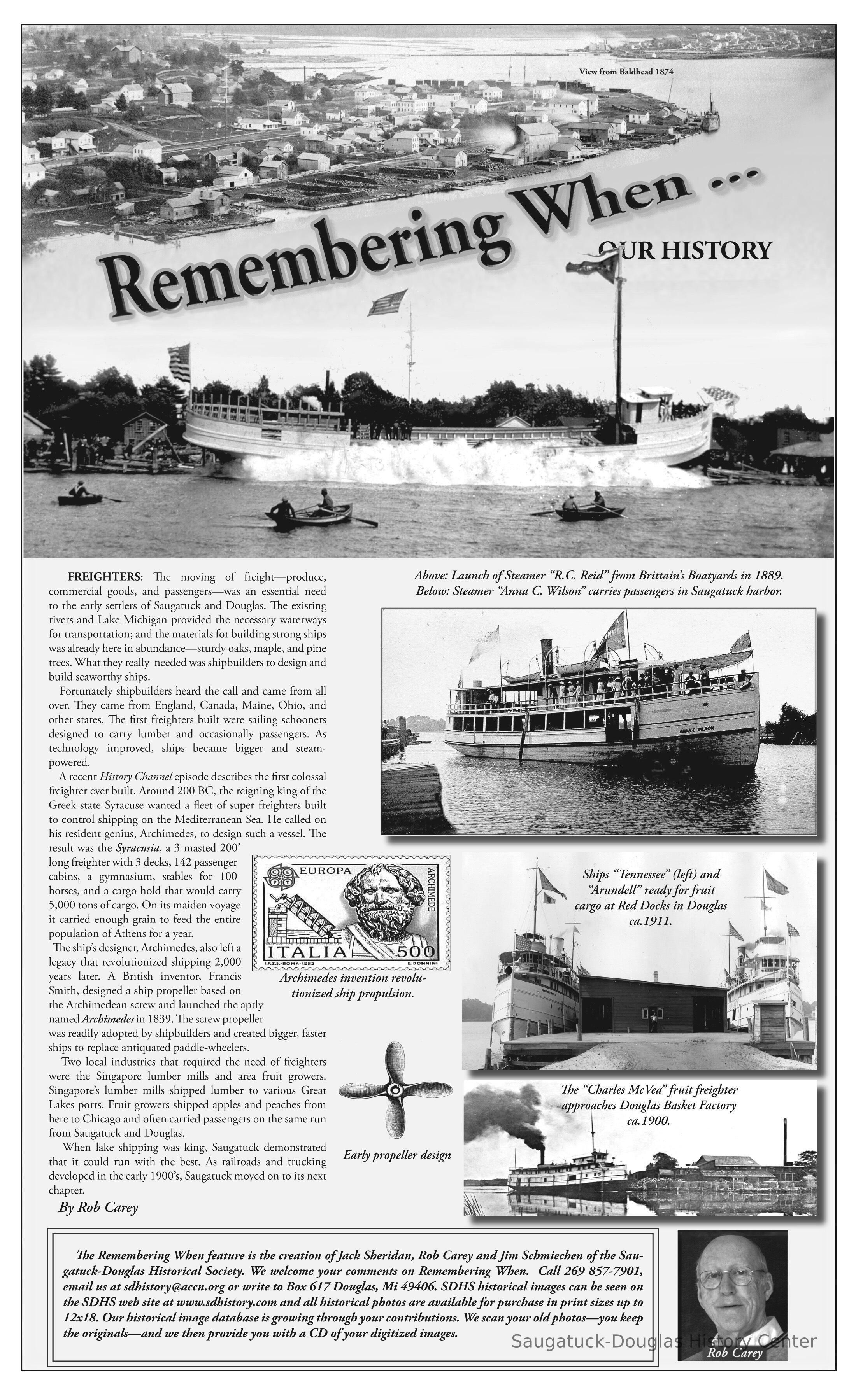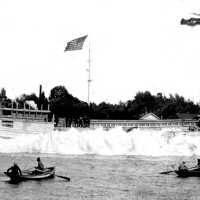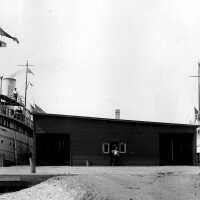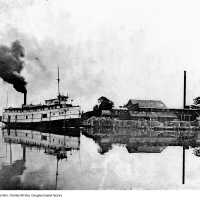Freighters

2021.87.87
FREIGHTERS: The moving of freight—produce, commercial goods, and passengers—was an essential need to the early settlers of Saugatuck and Douglas. The existing rivers and Lake Michigan provided the necessary waterways for transportation; and the materials for building strong ships was already here in abundance—sturdy oaks, maple, and pine trees. What they really needed was shipbuilders to design and build seaworthy ships. Fortunately shipbuilders heard the call and came from all over. They came from England, Canada, Maine, Ohio, and other states. The first freighters built were sailing schooners designed to carry lumber and occasionally passengers. As technology improved, ships became bigger and steam-powered. A recent History Channel episode describes the first colossal freighter ever built. Around 200 BC, the reigning king of the Greek state Syracuse wanted a fleet of super freighters built to control shipping on the Mediterranean Sea. He called on his resident genius, Archimedes, to design such a vessel. The result was the Syracusia, a 3-masted 200’ long freighter with 3 decks, 142 passenger cabins, a gymnasium, stables for 100 horses, and a cargo hold that would carry 5,000 tons of cargo. On its maiden voyage it carried enough grain to feed the entire population of Athens for a year. The ship’s designer, Archimedes, also left a legacy that revolutionized shipping 2,000 years later. A British inventor, Francis Smith, designed a ship propeller based on the Archimedean screw and launched the aptly named Archimedes in 1839. The screw propeller was readily adopted by shipbuilders and created bigger, faster ships to replace antiquated paddle-wheelers. Two local industries that required the need of freighters were the Singapore lumber mills and area fruit growers. Singapore’s lumber mills shipped lumber to various Great Lakes ports. Fruit growers shipped apples and peaches from here to Chicago and often carried passengers on the same run from Saugatuck and Douglas. When lake shipping was king, Saugatuck demonstrated that it could run with the best. As railroads and trucking developed in the early 1900’s, Saugatuck moved on to its next chapter. By Rob Carey
Remembering When
Winthers, Sally
Digital data in CatalogIt
R.C. Reid (ship) 1889Carey, Rob 1928-2019Sheridan, John "Jack" O. 1938-Lane, Kit 1939-2024Charles McVea (ship) 1888-1928Anna C. Wilson (ship) 1912-1943Schmiechen, James A.Arundell (ship)Tennessee (ship)
Kalamazoo River
Local Observer
01/02/2022
11/18/2023





